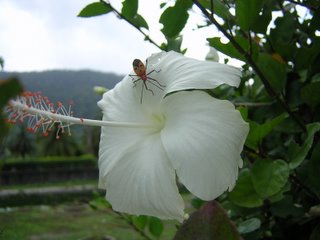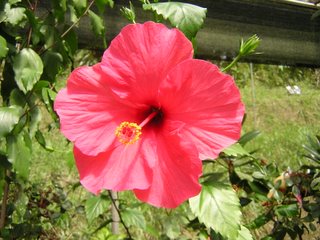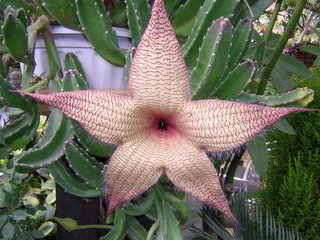Malaysia Flowers
The aim of this blog is to showcase the beautiful and colorful flowers of Malaysia. Thanks to identifications by many horticulturist and botanist from all around the world, this blog has been made possible.
Thursday, November 17, 2005
Pink Panther Rose
 |
 Is this a carnation? It's really a big flower isn't it? This was taken in an orchard in Fraser's Hill. I wonder how long does it take for this flower to grow this big. The vibrant pink reminds me of Pink Panther!
Is this a carnation? It's really a big flower isn't it? This was taken in an orchard in Fraser's Hill. I wonder how long does it take for this flower to grow this big. The vibrant pink reminds me of Pink Panther!Does this look like a carnation to you?
Added Nov 20. This flower is a Camellia as identified by Ryan from California.
Added Nov 25. This flower is confirmed to be a Rose as Identified by Calvin_OrchidLover and Weebus.
Thank you all for your kind identifications.
Tuesday, November 15, 2005
White Hibiscus
 |
 A white hibiscus taken from Langkawi's Crocodile Farm. Notice an interesting insect on the flower? Any insect researchers or scientists who could help to identify this insect?
A white hibiscus taken from Langkawi's Crocodile Farm. Notice an interesting insect on the flower? Any insect researchers or scientists who could help to identify this insect?Added Nov 27, 2005
The insect on the the white hibiscus could be a type of Assassin Bug as identified by RosemarieRo! Detail information and prove of insect is on the way!
Malaysia Hibiscus
 |
 Our Malaysia's Hibiscus is the pride of the country which signifies our country's strength, unity and independance. The Hibiscus is easy to maintain and grows in many types of soil, making it the most commonly found flower in Malaysia.
Our Malaysia's Hibiscus is the pride of the country which signifies our country's strength, unity and independance. The Hibiscus is easy to maintain and grows in many types of soil, making it the most commonly found flower in Malaysia.Interesting facts:
1. Even part of the plant, from the stem to the leaves and flowers has a functional role of medicinal value!
2. Juices from the flower can be used as dye and shoe polish!
3. The seeds have been used as a tonic in India.
4. The bark can be used as fibre to make ropes.
5. The root have been taken to relieve fever.
Besides red hibiscus, have you seen any other hibiscus in other colors?
Stapelia gigantea
 |
 Can anyone identify this image? I love to take pictures of flowers but have no idea what's the name. Enlighten me! :)
Can anyone identify this image? I love to take pictures of flowers but have no idea what's the name. Enlighten me! :)Added Nov 20. This flower could be a Stapeliad of some sort, perhaps a Taveresia species.
More information about this plant:-
Stapelia gigantea is an interesting plant that resembles cactus, with clumps of 4-sided spineless stems. Carrion flowers are native to S. Africa.
Blooming Time: September. Flowers are large, fleshy, shaped as 5-pointed stars; they have an elaborate circular fleshy disk in the center. The flowers smell like carrion and are not offensive if blooming outside. Flowers are 10-16 inches across.
Culture: Stapelia gigantea need full sun and moderate water in the growing season. They need a well-drained soil (2 parts loam to 1 part sharp sand) with small pebbles mixed in for drainage. They need a cool, dry rest period in winter. Fertilize once during the growing season with a balanced fertilizer diluted to ½ the strength recommended on the label. They are best managed in pots and can withstand extreme heat.
Propagation: Stapelia gigantea are propagated by stem cuttings. Take cutting in spring when new growth begins. Let cuttings callus up for 2-3 weeks before planting.
Information on Stapelia gigantea quoted from this site: http://www.plantoftheweek.org/week048.shtml

